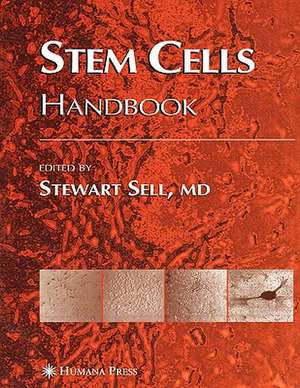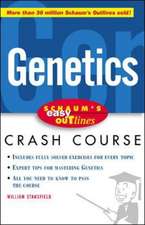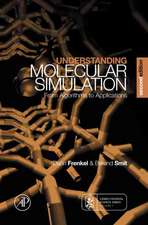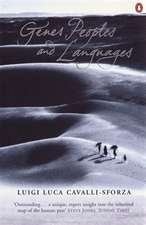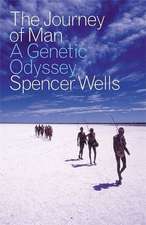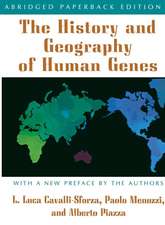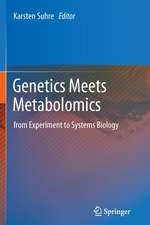Stem Cells Handbook
Editat de Stewart Sellen Limba Engleză Paperback – 9 dec 2010
| Toate formatele și edițiile | Preț | Express |
|---|---|---|
| Paperback (2) | 1153.79 lei 6-8 săpt. | |
| Springer – 16 aug 2013 | 1153.79 lei 6-8 săpt. | |
| Humana Press Inc. – 9 dec 2010 | 1685.99 lei 6-8 săpt. |
Preț: 1685.99 lei
Preț vechi: 1774.72 lei
-5% Nou
Puncte Express: 2529
Preț estimativ în valută:
322.65€ • 350.35$ • 271.03£
322.65€ • 350.35$ • 271.03£
Carte tipărită la comandă
Livrare economică 22 aprilie-06 mai
Preluare comenzi: 021 569.72.76
Specificații
ISBN-13: 9781617373671
ISBN-10: 1617373672
Pagini: 509
Ilustrații: XIII, 509 p. 251 illus., 22 illus. in color.
Dimensiuni: 210 x 279 x 26 mm
Greutate: 1.17 kg
Ediția:Softcover reprint of hardcover 1st ed. 2004
Editura: Humana Press Inc.
Colecția Humana
Locul publicării:Totowa, NJ, United States
ISBN-10: 1617373672
Pagini: 509
Ilustrații: XIII, 509 p. 251 illus., 22 illus. in color.
Dimensiuni: 210 x 279 x 26 mm
Greutate: 1.17 kg
Ediția:Softcover reprint of hardcover 1st ed. 2004
Editura: Humana Press Inc.
Colecția Humana
Locul publicării:Totowa, NJ, United States
Public țintă
ResearchCuprins
1 Stem Cells: What Are They? Where Do They Come From? Why Are They Here? When Do They Go Wrong? Where Are They Going?.- 2 Stem Cells from Early Mammalian Embryos: Common Themes and Significant Differences.- 3 Embryonic Stem Cells: Isolation and Application of Pluripotent Cells from the Pregastrulation Mammalian Embryo.- 4 From Stem Cells to Functional Tissue Architecture: What Are the Signals and How Are They Processed?.- 5 Germline Stem Cells.- 6 Stem Cells and Cloning.- 7 Genomic Imprinting in Mouse Embryonic Stem and Germ Cells.- 8 Stem Cells in Amphibian Regeneration.- 9 Stem Cells in Dermal Wound Healing.- 10 Bone Marrow Mesenchymal Stem Cells.- 11 Normal and Leukemic Hematopoietic Stem Cells and Lineages.- 12 Developmental Origin of Murine Hematopoietic Stem Cells.- 13 Stromal Support of Hematopoiesis.- 14 Hematopoietic Stem Cells: Identification, Characterization, and Assays.- 15 Hematopoietic Stem Cells in Leukemia and Lymphoma.- 16 Neurons, Stem Cells, and Potential Therapies.- 17 Neural Stem Cells: From In Vivo to In Vitro and Back Again—Practical Aspects.- 18 Molecular Genetic Approaches in the Study of Retinal Progenitor Cells and Stem Cells.- 19 Endothelial Progenitor Cells.- 20 Development of the Cardiovascular System in Embryoid Bodies Derived from Embryonic Stem Cells.- 21 Transcription Factors, Growth Factors, and Signal Cascades Capable of Priming Cardiogenesis.- 22 Strategies Using Cell Therapy to Induce Cardiomyocyte Regeneration in Adults with Heart Disease.- 23 Generation and Stem Cell Repair of Cardiac Tissues.- 24 Stem Cells in Kidney Morphogenesis.- 25 Nephroblastoma: A Metanephric Caricature.- 26 Stem Cells in Nonmelanoma Skin Cancer.- 27 The Stem Cell Plasticity of Aggressive Melanoma Tumor Cells.- 28 Stem Cells in Glandular Organs.- 29Gastrointestinal Stem Cells: Proliferation Kinetics and Differentiation Hierarchies.- 30 Stem Cell Origin of Cell Lineages, Proliferative Units, and Cancer in the Gastrointestinal Tract.- 31 Specification of Liver from Embryonic Endoderm.- 32 Animal Models for Assessing the Contribution of Stem Cells to Liver Development.- 33 Normal Liver Progenitor Cells in Culture.- 34 Permanent Lines of Stem Cells from the Liver.- 35 Biology of Human Liver Stem Cells.- 36 Transplantation of Hepatic Stem Cells and Potential Applications for Cell Therapy.- 37 Plasticity of Adult-Derived Pancreatic Stem Cells.- 38 Islet Cells.- 39 Mammary Epithelial Stem Cells.- 40 Morphogenesis of Prostate Cancer.- 41 Stem Cells in Lung Morphogenesis, Regeneration, and Carcinogenesis.- 42 Noninvasive Imaging in Stem Cell Therapies: Current State and Future Perspectives.- 43 What Is the Future for Stem Cell Research?: Whether Entity or Function?.
Recenzii
"Truly outstanding descriptions of the fields of early mammalian development, DNA methylation, neural stem cell biology, and imaging technologies help round the reader's knowledge through the use of perspicuous language and concepts." - Developmental Cell
Textul de pe ultima copertă
After decades of intense experimental work by a number of different investigators, it is now clearly recognized that the ability of stem cells to give rise to broad variety of differentiated cell types is critical not only to the emergence of new and more effective treatments for human diseases, but also to understanding the pathogenesis of congenital abnormalities and cancer. In Stem Cells Handbook, leading scientists in the field survey the "state-of-the-science" of stem cell biology, explaining the origin of stem cells, and describing how they function, how they can cause illness, and how they might be employed to cure or ameliorate disease. In particular, the authors discuss the roles of stem cells in development and organogenesis, in normal tissue turnover, in the repair response to injury, and in carcinogenesis. They also explain how to obtain stem cells from different organs, culture them in vitro, and manipulate them for therapeutic use. The book highlights the promise of using embryonic and adult tissue stem cells in both animal models and human diseases for the replacement of damaged tissue, for the treatment of cancer, for cell replacement, and for gene therapy treatments of genetic and metabolic diseases.
Comprehensive and authoritative, Stem Cells Handbook not only critically reviews and summarizes the diverse studies now being carried out on this highly promising class of cells, but also constitutes every investigator's gold-standard reference on stem cell biology and medicine today.
Comprehensive and authoritative, Stem Cells Handbook not only critically reviews and summarizes the diverse studies now being carried out on this highly promising class of cells, but also constitutes every investigator's gold-standard reference on stem cell biology and medicine today.
Caracteristici
Includes supplementary material: sn.pub/extras
Notă biografică
Dr. Sell is a board certified pathologist and immunologist. He began research in 1957 while a medical student at the University of Pittsburgh, in the Department of Pathology, under Frank J. Dixon. After a pathology residency at Massachusetts Hospital, and post doctoral fellowships at NIH and Birmingham England he returned to the University of Pittsburgh for 5 years before moving to the University of California at San Diego. After 12 years at UCSD, Dr. Sell took the position as Chair of Pathology and Laboratory Medicine at the University of Texas (UT) at Houston before moving to Albany Medical College. As of February 2003 he has been a senior scientist at Wadsworth Center, a Professor at University at Albany School of Public Health and an Adjunct Professor at Albany College of Pharmacy. Dr. Sell received the Rudolph L. K. Virchow Award of the Italian Medical Magazine LeadershipMedica.com for his concept of cancer stem cells; he was named Legacy Laureate of the University of Pittsburgh for his work on alpha-fetoprotein as a marker for liver cancer; and in 2007 received the Abbott Award of the International Society for Oncodevelopmental Biology and Medicine for recognizing the role of stem cells in carcinogenesis. He has published over 400 papers and 12 books, including 6 editions of Immunology, Immunopathology and Immunity. His paper with Barry Pierce (Lab. Invest. 70:6-21, 1994.) was selected as an AACR scientific landmark.
